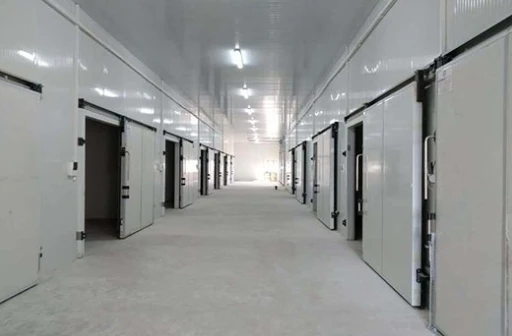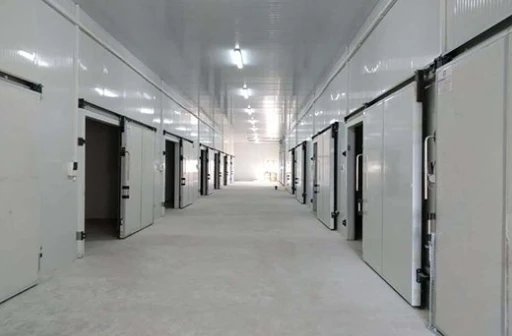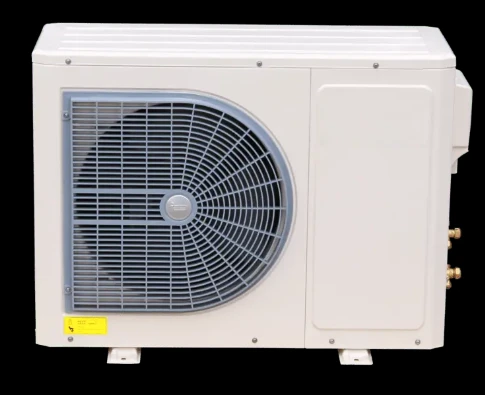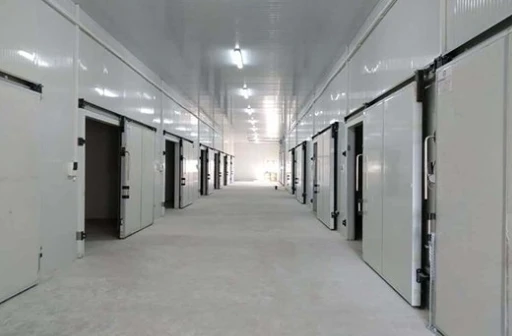Open Type Condensing Unit Reliable Cooling Solutions from Leading Manufacturers & Suppliers
- Introduction: Understanding Open Type Condensing Units
- The Technical Superiority of Open Type Condensing Units
- A Comparative Analysis of Leading Manufacturers
- Supplier Network and Global Reach
- Customization and Adaptation to Client Needs
- Applications and Real-World Case Studies
- Conclusion: Why Leading Businesses Choose Open Type Condensing Units

(open type condensing unit)
Introduction: The Evolution and Importance of Open Type Condensing Unit
In the realm of commercial and industrial refrigeration, the open type condensing unit
has established itself as a critical solution for reliable cooling performance. Unlike hermetically sealed alternatives, open type condensing units are engineered for accessibility, flexibility, and ease of service, making them a preferred option for sectors ranging from food processing, cold storage, to pharmaceutical manufacturing. With a global market value estimated to surpass USD 5.2 billion by 2028 (source: industry reports), the demand for open type condensing units continues to rise due to their compatibility with diverse refrigerants, high efficiency ratings, and superior maintenance profiles. Open type condensing unit companies, manufacturers, and suppliers leverage advanced engineering to meet complex cooling demands, while also ensuring regulatory compliance and sustainability.
Technical Advantages and Efficiency Metrics
Open type condensing units are distinguished by their modular design, which grants users the convenience of rapid component replacement and system upgrades. The use of high-efficiency, belt-driven semi-hermetic or open compressors enables operators to achieve targeted cooling loads with minimal energy loss. Many open type units are designed to handle refrigerants such as R22, R404A, R134a, and the growing trend toward natural refrigerants like ammonia (NH3) and CO2, addressing both performance and environmental longevity.
Furthermore, advanced fan technology, microchannel and fin/tube heat exchangers, and variable speed controls contribute to energy savings as high as 23% over legacy sealed systems. On average, industrial installations using modern open type condensing units report annual maintenance cost reductions of 15%–20% due to accessible component design. For mission-critical applications demanding uptime and longevity, open type units support custom redundancy and high-capacity models ranging up to 600 kW.
Comparing Leading Open Type Condensing Unit Manufacturers
When considering open type condensing unit manufacturers, it is paramount to evaluate the technical credibility, global distribution, and after-sales support each can provide. Below is a comparative overview of several globally recognized brands:
| Manufacturer | Year Established | Max Cooling Capacity (kW) | Key Refrigerants Supported | Warranty (Years) | Global Presence |
|---|---|---|---|---|---|
| Bitzer | 1934 | 600 | R134a, R404A, NH3, CO2 | 3 | 60+ Countries |
| Emerson (Copeland) | 1921 | 540 | R22, R407C, R449A | 2 | Global |
| Frascold | 1936 | 400 | R404A, R507, R448A | 2 | 40+ Countries |
| Güntner | 1931 | 500 | R22, R290, R744 | 3 | Europe, APAC, Americas |
| Sabroe | 1897 | 600 | NH3, CO2, HFCs | 3 | EMEA, Asia, Americas |
These figures illustrate not just capacity and range but also leadership in supporting modern refrigerants and offering robust warranty programs. The presence in multiple markets and adherence to international standards is a key differentiator among top open type condensing unit companies.
Supply Chain Networks and Global Supplier Dynamics
The resilience of open type condensing unit suppliers is tested by their ability to navigate complex logistics and regulatory frameworks across continents. Premium suppliers maintain extensive inventories in strategic locations to minimize lead times, a factor that is crucial for end users operating high-turnover or mission-critical facilities.
In 2023, over 56% of global open type units were sourced through distributor partnerships, underscoring the value of supplier relationships in facilitating rapid technical support and spare parts availability. OEM-certified suppliers often provide value-added services such as system commissioning, reliability audits, and on-site training programs, particularly in regions where industrial refrigeration plays a strategic role in food security and healthcare. The quality of the supplier network is often reflected in client satisfaction ratings and repeat business ratios.
Customization Capabilities and Tailored Solutions
Open type condensing unit manufacturers increasingly offer tailored design solutions to accommodate unique operating environments. This includes the integration of weatherproof enclosures for harsh outdoor climates, adaptation for low-GWP (Global Warming Potential) refrigerants, anti-corrosion treatments, and energy optimization software.
Customizations can range from enhanced vibration isolators and noise attenuation systems to bespoke interface panels supporting IoT-based monitoring. For instance, food processing plants operating under the U.S. FDA’s FSMA regulations may require hygiene-compliant finishes and washdown-capable designs, whereas pharmaceutical cold chains prioritize failover mechanisms and precise temperature controls (±0.5°C accuracy).
A recent survey found that 77% of end users cite the ability to customize functionality and configuration as a decisive purchasing criterion when choosing among open type condensing unit suppliers.
Real-World Applications and Case Study Highlights
The versatility of open type condensing units lends itself to a broad spectrum of industries. In 2022, the largest share of new installations was recorded in the cold storage sector, accounting for 31% of total global demand. These units excel in both medium- and low-temperature refrigeration, with use cases spanning supermarkets, cold logistics depots, beverage production lines, and deep-freeze applications in biotechnology.
Case Study 1: Multi-Stage Cold Storage Facility, Germany
A logistics hub installed 24 open type condensing units (NH3 compatible) with an aggregated cooling capacity of 7.2 MW. The project reported a 19% decrease in energy usage over previous hermetic systems, with downtime reduced by over 75% due to superior serviceability.
Case Study 2: Dairy Processing Plant, India
Faced with frequent temperature fluctuations, the facility opted for customized units with automated digital controls, maintaining storage at +2°C with variance under 0.4°C. The application of variable frequency drives resulted in annual savings exceeding USD 42,000 on energy bills.
Case Study 3: Pharmaceutical Cold Chain, North America
Due to stringent uptime specifications, dual open type condensing units with hot standby configuration were commissioned. Over two years, this solution registered zero instances of temperature deviation and facilitated remote diagnostics for preventive maintenance.
Conclusion: Open Type Condensing Unit as the Intelligent Choice
Reviewing the technical distinctions, manufacturer leadership, and proven application scenarios, it is evident that an open type condensing unit provides robust advantages for forward-thinking businesses. Premium open type condensing unit companies, manufacturers, and suppliers continually innovate to deliver peak efficiency, reliability, and operational flexibility. Whether for new builds or system retrofits, these solutions empower mission-critical cooling operations with lower lifecycle costs, faster maintenance intervals, and readiness for evolving refrigerant regulations. With the global push toward sustainability, open type condensing unit offerings stand out as high-value investments in both established and emerging markets.

(open type condensing unit)
FAQS on open type condensing unit
Q: What is an open type condensing unit?
A: An open type condensing unit is a refrigeration component where the compressor is driven by an external motor or engine. This design allows for easy maintenance and flexibility in installation. It is commonly used in commercial and industrial refrigeration systems.
Q: How can I find reliable open type condensing unit companies?
A: You can find reliable companies by researching online reviews, checking certifications, and requesting client references. Many industry directories also list reputable open type condensing unit companies. Additionally, attending trade shows can help you connect with trusted suppliers.
Q: What should I consider when choosing open type condensing unit manufacturers?
A: Consider factors such as product quality, customization options, and after-sales support. It's also important to verify the manufacturer's industry experience and certifications. Comparing multiple manufacturers can help you make an informed decision.
Q: Are there different types of open type condensing unit suppliers?
A: Yes, open type condensing unit suppliers vary in terms of size, product range, and specialization. Some focus on specific industries or custom solutions. Always confirm that the supplier can meet your technical and volume requirements.
Q: What are the main benefits of using an open type condensing unit?
A: Open type condensing units offer easy maintenance, flexible motor options, and high efficiency. They are suitable for a wide range of refrigeration needs. Many manufacturers and suppliers provide units tailored to specific applications.






